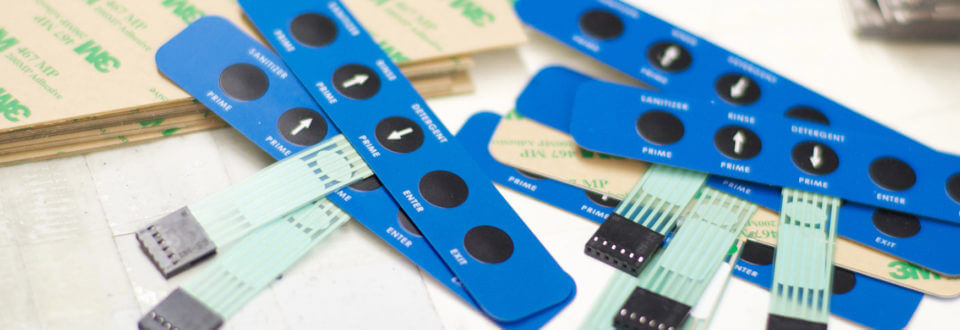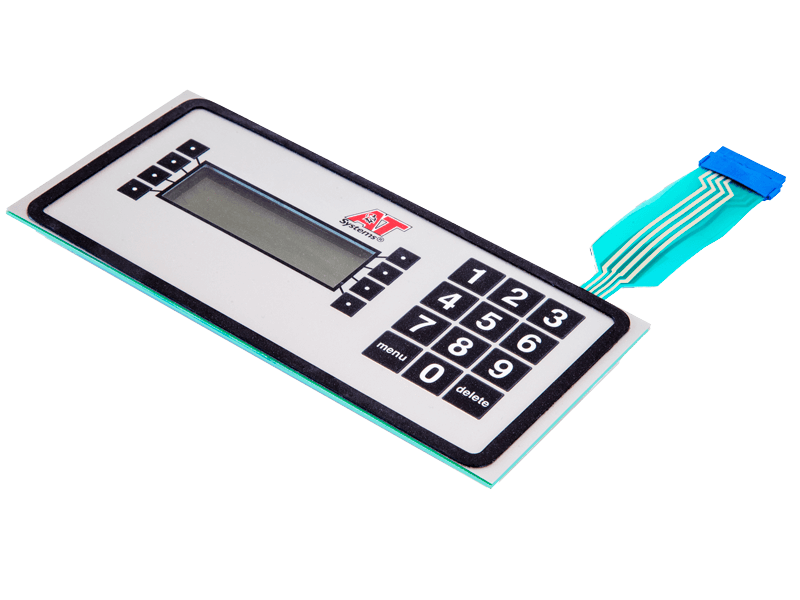Why Membrane Switches Are Preferred for Their Thin and Compact Designs
Why Membrane Switches Are Preferred for Their Thin and Compact Designs
Blog Article
The Ultimate Source on Membrane Layer Switches Over: Style, Performance, and Applications
Membrane layer switches over offer as an interesting intersection of design and functionality, playing a critical function in contemporary individual interfaces across numerous markets. As we explore the varied applications of membrane switches, it becomes evident that their flexibility and sturdiness are crucial in environments varying from healthcare to customer electronics.

Comprehending Membrane Layer Switches
Membrane layer buttons are a kind of user interface innovation widely used in different electronic devices, defined by their slim, flexible design and capability. These switches are composed of numerous layers that include graphic overlays, sticky layers, and wiring, allowing a efficient and small user interface for customers. They can be discovered in devices, clinical devices, and industrial control panels, giving a trustworthy method for user interaction.
One of the primary benefits of membrane layer switches is their ability to withstand contaminants such as dirt and moisture, making them ideal for settings where resilience is necessary. Their inconspicuous style permits seamless combination into different applications, while the personalized visuals overlays enhance customer experience by supplying clear aesthetic comments. Furthermore, membrane switches can accommodate a variety of innovations, such as responsive comments and backlighting, additional enhancing their functionality.
The manufacturing process for membrane layer switches over usually entails screen die-cutting, printing, and lamination techniques, ensuring precision and consistency in manufacturing. Generally, membrane changes represent a flexible and effective service for modern-day digital tools, integrating capability with aesthetic appeal in customer interface design.
Trick Components and Layout Components
A range of crucial parts and style elements integrated to create an effective membrane button. At the core, the graphic overlay serves both functional and aesthetic functions, supplying an user-friendly user interface while shielding internal elements from environmental aspects. The choice of products, typically polyester or polycarbonate, influences resilience and tactile feedback.
Below the overlay, the glue layer makes sure the button adheres securely to the substrate, which can be plastic, glass, or metal. The spacer layer is important, as it maintains the required gap between the overlay and the circuit layers, permitting effective actuation. Membrane Switches. Circuit traces, usually made from conductive ink or adhesive, are published on an adaptable substrate, making it possible for electric signals to be transmitted when stress is used
Layout factors to consider also consist of the plan of responsive domes or embossing that supply physical responses to the customer, boosting the total experience. In addition, the design and spacing of the switches must be optimized for simplicity of use, making certain that individuals can browse the user interface with ease. Generally, these components and layout elements work synergistically to develop a reputable, functional membrane button customized to specific applications.
Functionality and Procedure Device
At the heart of effective performance for membrane switches lies their functional mechanism, which facilitates individual communication with a basic yet reliable layout. These buttons run on the concept of pressure activation, where a user applies force to an assigned location of the button (Membrane Switches). This activity compresses the layers of the button, finishing an electrical circuit that sends out a signal to the linked device
The building typically includes a leading graphic layer, a sticky spacer layer, browse around this site and a bottom circuit layer, which collectively develop a robust user interface. When pressure is used, the top layer collapses versus the bottom circuit layer, allowing conductive traces to link. This design not just makes it possible for clear responsive comments but additionally makes certain longevity and integrity, as the switches are frequently immune to dust and dampness.
Moreover, the convenience of membrane layer switches over enables integration with various technologies, including LED indications and microcontrollers, enhancing their functionality. By supplying a streamlined user interface that decreases mechanical wear, membrane switches over stay a preferred option in applications varying from consumer electronic devices to commercial equipment, guaranteeing ideal efficiency and individual fulfillment throughout varied atmospheres.
Sorts Of Membrane Layer Switches

An additional significant classification is lit up membrane layer switches, which include backlighting to boost visibility in low-light conditions. These Learn More switches are usually made use of in control panels and control panels where clear visibility is crucial.
Furthermore, there are custom membrane layer switches created to fulfill details dimensional, visual, and practical needs. These personalizations can include special shapes, shades, and formats, permitting smooth assimilation right into different gadgets.

Applications Throughout Various Industries
Just how do membrane switches improve capability across varied industries? These versatile parts are indispensable to various applications, delivering streamlined interface and durable performance. In the clinical industry, membrane switches play an important duty in devices such as analysis equipment and patient surveillance systems, where dependability and simplicity of cleansing are paramount. Their ability to withstand harsh settings makes them excellent for research laboratory tools and medical devices.
In the automotive market, membrane layer buttons are typically utilized in dashboards and control panels, offering user-friendly controls that improve driver security and benefit. The customer electronics market additionally gains from their personalized and light-weight features, making it possible for sleek layouts for smartphones and home appliances.
Moreover, membrane layer switches locate applications in commercial automation, where they add to effective equipment procedure and surveillance systems. Their resistance to dirt and wetness makes more info here certain functionality in demanding conditions (Membrane Switches). Furthermore, the food and beverage market employs membrane buttons for equipment control, where hygiene and durability are vital
Verdict
Finally, membrane switches stand for a crucial advancement in interface modern technology, identified by their one-of-a-kind design and performance. Their essential elements, including visuals overlays and circuit traces, contribute to their functional effectiveness through stress activation. The convenience of membrane layer switches over promotes their application across diverse markets, from medical devices to customer electronic devices. This detailed understanding enhances the value of membrane layer switches in boosting product use and durability in modern technological settings.
Membrane layer switches offer as an intriguing junction of design and functionality, playing an essential role in contemporary customer interfaces across different fields.Membrane layer switches are a kind of customer interface innovation widely utilized in different electronic gadgets, identified by their thin, versatile style and performance.At the heart of reliable capability for membrane switches lies their operational system, which helps with individual communication through a simple yet effective layout. These buttons run on the concept of stress activation, where a customer uses force to a marked location of the switch.In verdict, membrane switches over represent an important advancement in individual interface innovation, defined by their one-of-a-kind style and capability.
Report this page